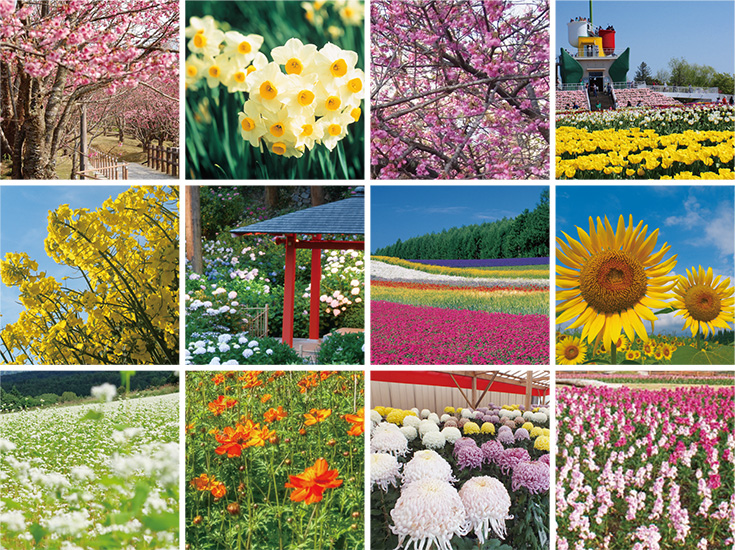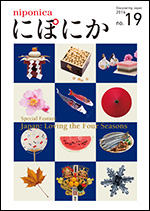niponica is a web magazine that introduces modern Japan to people all over the world.
2016 No.19
Japan: Loving the Four Seasons

Japan in Four Seasons
Journeys to Floral Paradise
Written by Sasaki Yukitsuna

Photo: amanaimages Inc.
Man’yoshu: A Garland of Flowers
The Man’yoshu (Myriad Leaves Anthology), compiled in the eighth century, is Japan’s oldest collection of poetry and contains about 4,500 waka. A third of them, some 1,500, allude to plants and flowers, making for a rich garland. These nature images appear not only in seasonal-themed works but also in love, elegy, travel, and celebratory poems.
What’s more, many different species appear, a total approximating 160 plant varieties comprising 50 flower types. Few people today can recite 160 species of plants, let alone 50 flowers, and you’d be hard pressed to find an anthology anywhere in the world with so many plant and flower names.
What makes Japan unique? There are four distinct seasons here, which means that spring comes with bright green leaves and buds, and autumn its beautiful crimson and gold. Every season brings its particular bouquet. For these reasons, flowers have long been ingrained in Japanese culture, as seen in ikebana and floral-print kimono.
The waka genre of seasonal poems has extensive history, including the delightful practice of getting together with friends or fellow courtiers for composing spring-themed “songs” to enhance appreciation of the season. It was common to include flower names like ume (Japanese plum), sakura (cherry blossom), and others. Such traditions may be why Japanese people are good at learning a wide variety of plant and flower names.
It was also common to send a gift accompanied by flowers and waka composed with reference to them. Those traditions likely contributed to a great increase in poems about flowers and more allusions to species varieties.
The Man’yoshu flower cited most often is hagi (bush clover), an autumn bloom appearing in about 140 works. The next most frequently mentioned in about 120 poems is ume, which blooms in spring. The plum was a new species back then, imported around the same time the Man’yoshu was compiled—and very popular among the aristocracy. After ume, in frequent appearance order come tachibana (tachibana orange) and cherry blossoms.
It’s curious to note that hagi, ume, tachibana, and sakura are all petite blossoms. In ancient Japanese, “kuwashi” was used as a compliment regarding small things, which were considered beautiful. This sensitivity, feeling the beauty of small things, is particularly Japanese.
Enjoy the following small, personal garland of sakura.
Poem and sakura sent by a poet to a young lady:
These blossoms on a single sprig
each conceal a hundred words of mine.
Do me the favor of not dismissing either.
— Fujiwara no Asomi Hirotsugu (VIII: 1456)
This love poem appears in Man’yoshu with an intro, much like liner notes, explaining how it got composed: a man gifted this waka—meant to be chanted or sung—with a dainty cherry tree branch and a request. Imagine the aesthetic sense and sensibility it took, some 1,300 years ago, to send an emotive poem about a flower along with blossoms of that flower to a lover.






